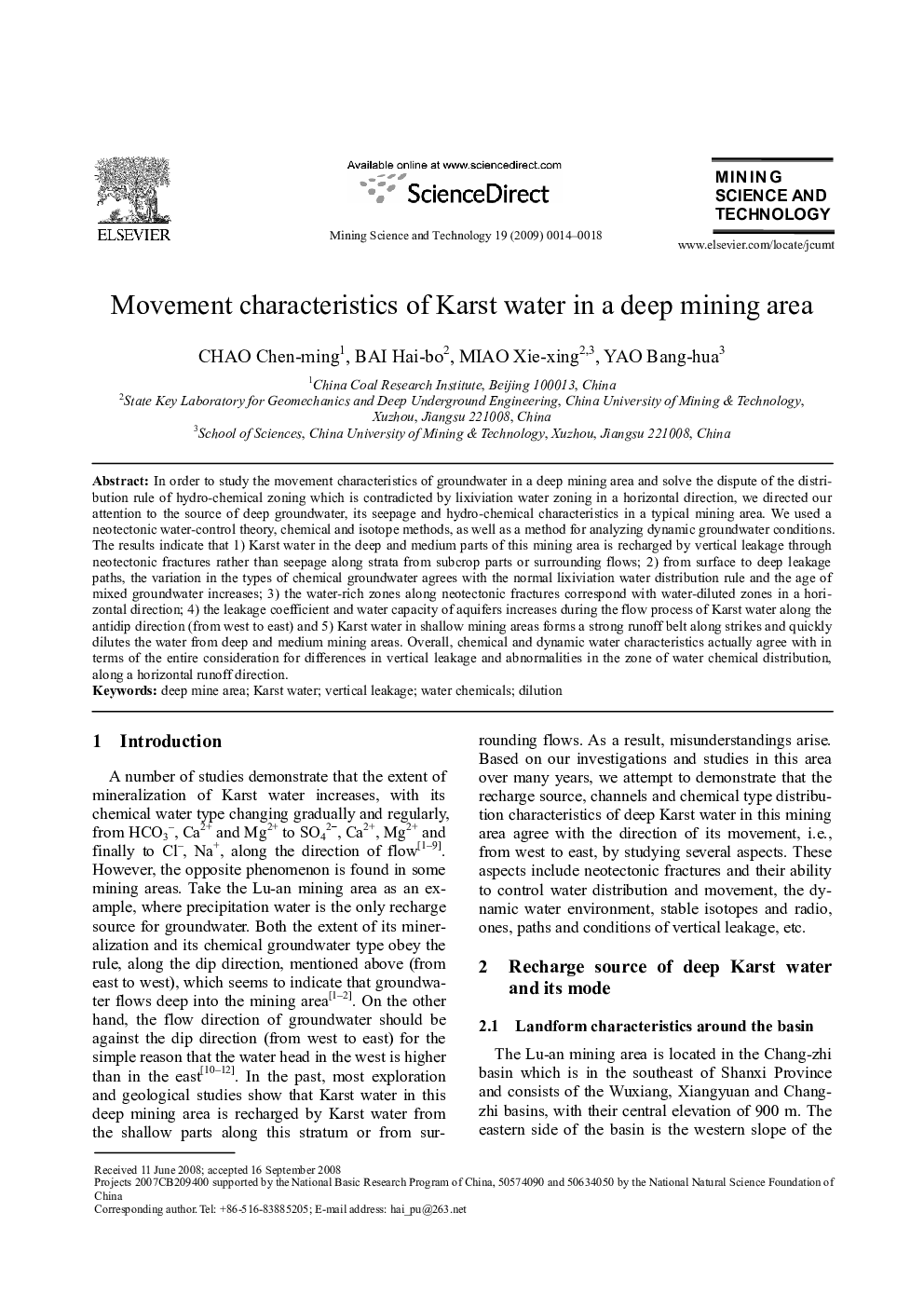| کد مقاله | کد نشریه | سال انتشار | مقاله انگلیسی | نسخه تمام متن |
|---|---|---|---|---|
| 294867 | 511499 | 2009 | 5 صفحه PDF | دانلود رایگان |

In order to study the movement characteristics of groundwater in a deep mining area and solve the dispute of the distribution rule of hydro-chemical zoning which is contradicted by lixiviation water zoning in a horizontal direction, we directed our attention to the source of deep groundwater, its seepage and hydro-chemical characteristics in a typical mining area. We used a neotectonic water-control theory, chemical and isotope methods, as well as a method for analyzing dynamic groundwater conditions. The results indicate that 1) Karst water in the deep and medium parts of this mining area is recharged by vertical leakage through neotectonic fractures rather than seepage along strata from subcrop parts or surrounding flows; 2) from surface to deep leakage paths, the variation in the types of chemical groundwater agrees with the normal lixiviation water distribution rule and the age of mixed groundwater increases; 3) the water-rich zones along neotectonic fractures correspond with water-diluted zones in a horizontal direction; 4) the leakage coefficient and water capacity of aquifers increases during the flow process of Karst water along the antidip direction (from west to east) and 5) Karst water in shallow mining areas forms a strong runoff belt along strikes and quickly dilutes the water from deep and medium mining areas. Overall, chemical and dynamic water characteristics actually agree with in terms of the entire consideration for differences in vertical leakage and abnormalities in the zone of water chemical distribution, along a horizontal runoff direction.
Journal: Mining Science and Technology (China) - Volume 19, Issue 1, January 2009, Pages 14-18